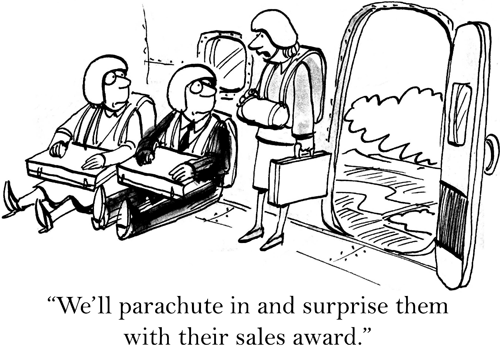
 |
| |
 |
 #INTHEAIREVERYWHERE |
| Vol. 21 No. 24 | Thursday
June 9,
2022 |
| |
 |
Let me tell you that our sector, freight forwarding, looking at 2021 has just reported the biggest increase in turnover in many years. I have personally spoken with many of our entrepreneurs at the FIATA Headquarters’ earlier last month and all confirmed 2021 has been an exceptional year. Freight forwarders, as was observed by several speakers at the hybrid Geneva event, are the most up to date trade index one could think of, in other words when forwarders thrive, international trade prospers. Some of the guys even dared predict a more than decent 2022, despite the problems with war in Europe. The atmosphere in Geneva was ecstatic, FIATA members were able to meet again face-to-face since 2019 and everyone was on high spirits. I am told the same atmosphere was felt just a few days later at the CNS in Phoenix, where many of our common friends were in the attendance. Let me also mention our own Italian federation: Fedespedi. President Silvia Moretto concluded her tenure in Venice on 22nd and 23rd of May by celebrating the 75th anniversary of the association with a convention bearing an expressive title: “Inspired by a world that changes”.
Part of the celebration was a visit at the exclusive Scuola Grande di San Rocco, a jewel which is not always getting the credit it deserves, but Venice is Venice and making the list of its best attractions is challenging. Elsewhere, there are many other opportunities to meet this year and if you look up in the air you can see that aircraft fly again in large numbers, if not as many as in 2019, capacities are picking up again. Yet expecting international trade and tourism to precisely return to the same level is not realistic. Trade shows are nowhere near the frenzy we had experienced at the end of the last decade and the practice of holding hybrid events will surely continue, so my expectation is that trade shows will never return to the same level we have known in recent years, and some of us may have been thinking “thank God” . . . Clearly this calls for some thinking out of the box, perhaps by using the novel hybrid models with unexpected approaches, for example by making it possible for participants to choose how to participate on a daily basis, to suit their employment responsibilities. In my view we need a few more trade shows to crash the barrier and tell us if any or all of the usual suspects’ wandering crowds will be looking for the next ball again. Meanwhile, the hordes of tourists are back. Maybe they have different faces, as not all countries are recovering at the same pace, but leisure travel is picking up again and it is possible to fearlessly book a flight to your next fancy destination. Not everywhere as yet, but there is a reasonable choice. So my expectation is that it will not take long for tourism to be pushing our economies strongly again.
In the trading community things are also moving. There are signs that big multinationals such as Amazon, who nearly monopolized sales in the most recent years, start showing some respite. Timid articles appeared in the news, questioning the fact that the behemoth would have excessive staff and stacks of products in search of destinations. If you connect this observation with the articles we were given to read during the pandemic, when we were locked-down and could do nothing else, but making online retailers rich, there seems to be some food for thought here. I think many could have thought that Mr. Bezos’s sassy laughter accompanying the articles reporting his skyrocketing profits were not well paired with the grieving articles reporting the pains of the people struggling with the pandemic. The Greek called this retribution “phthonos ton theon” i.e. the envy of the gods, who decide to take away from those who had been exceedingly successful part of their triumph, considered excessive. Probably a company with Amazon’s spine will manage to cover the cracks on the wall soon, but we have to register the fact that something has changed for no apparent reason. On the other hand, even in Europe and in America many countries’ GDP’s are rapidly climbing to proportions we used to observe in South East Asia only: there must be something moving in the boxes if imports and exports are soaring . . . Leaving Ukraine out of the picture for a fraction, the only shadow in this portrait is inflation, and Jason Furman sends a warning in his article featured by the Group of Thirty. We learnt our lessons in the 1970’s on how devastating inflation can be, but in my opinion today’s markets move at a different speed and the trend can probably be curbed faster than in the past. Our society is also dealing with new and unexpected trends in the way people grade their priorities: both sides of the Atlantic large numbers of employed individuals have left or consider leaving their jobs as the myth of a “steady job”, as the Beatles would cite, no longer exists. Younger women and men seem to understand that their job is just another variable in the image of development and they seem to grasp the concept faster and more comprehensively than their employers, who actually ignited the process. We also hear the approach to work is changing that in China and Japan at a pace, and this is a totally new feature. Nobody knows how fast and deep this change will cut. Clearly these consequences do not merely reverberate in this generation’s own personal life. They actually start changing the landscape of “bigger, better, smarter” that we have been accustomed to for such a long time. Perhaps it is just the beginning, perhaps it is not, time will tell and those who can read these changing stars will have a much clearer route crossing their charts. When I was in South Africa for the FIATA WC 2004, we went to one of the natural parks and the group was advancing on a four-wheeler through the bushes. There were many trails and we were on one of them watching for wildlife, when all of a sudden a striped equine crossed our path. One of the guests said: “it’s a zebra crossing.” That’s it . . . We are all of a sudden at crossroads and those who are cool enough to understand the way forward will have their day, and chances are they could be more careful and considerate than we have been. Marco L. Sorgetti |
Best In Show One of the busiest people in Mumbai recently was the person who creates the awards and honorariums. We may wonder as example, if every panelist needs a citation for their attendance and participation in a talk session, but guess that is a personal choice. No doubt about it, one award that stood out from the pack at Air Cargo India last week as well-deserved, if not over-looked for years was presented to Ingo Zimmer, CEO of GSSA ATC Aviation Services AG and Dagmar Hanau ATC Group Marketing Manager. The duo is pictured here with a presenter amidst a glitter bonanza on stage at Mumbai. Dagmar and Ingo hosted the VIP Lounge at Air Cargo India, but actually when it comes to being a GSSA they don’t carry the bag for anybody. ATC won the Air Cargo India GSSA award because they are simply the best on the planet. So congratulations ATC, that finally got some long overdue respect at a trade show. As far as we can tell in our 48 years on this beat, ATC has always been “Best in Show”. Geoffrey |
The Adani Group,
headed by Gautam Adani, has, in just over two years after entering the
aviation space, become the largest operator in India. Through the Adani
Airports Holding Limited (AAHL), it manages the airports at Ahmedabad,
Lucknow, Mangaluru, Jaipur, Guwahati and Thiruvananthapuram (all the airports
were won through a competitive bid that was announced in 2019). Adani
also bought the Mumbai International Airport from the GVK group - today,
it is the jewel in the crown. The six airports along with the Mumbai airport,
handled nearly 80 million passengers in 2019-2020, approximately a quarter
of India's total air traffic of 341 million. |
 |
Air cargo trade show elbow and fist bumps, kisses and hugs and sharing food in what used to pass as normal behavior in a trade show setting anywhere, right now, may be premature and worse, might make you sick according to some people that we talked to in the past days. Pictured in Osaka City, Osaka Prefecture recently, people wear face masks amid renewed increase of the coronavirus COVID-19. Cargo Network Services Corp. (CNS) and Air Cargo India both were full-tilt boogie into an opportunity to ditch the mask and feel life slowly, if not immediately getting back to normal. But hold your horses Louie, we have received several reports of cases of people that have returned home from CNS testing positive for COVID. People don’t like to talk about it and as we have mentioned, there is no central clearing house. But, up and down the line, people are still contracting the disease, it is still out there and air cargo people are getting bit! The problem everybody has is with mandates. So forget the wrist slapping and angry social pressure. You wear a mask as purely a self-defense mechanism. Mandates, as we all know, simply do not work. The problem is not the mask. Masks work and worn correctly can save you a nasty couple days of a really big hurt with lingering impact that can continue for some time. What you will discover with COVID is that you cannot be reckless around it. Mask up. Get some K95s from Wellmore. Wellmore makes a K95 mask with adjustable ear loops and nose forming values that are much more comfortable, (that don’t have you looking like Mickey Mouse) to wear for long periods of time. Like we've said, the proof of the trade show will be the second or third time these events are held should cast better light on their true value. Our hope is that we can all be together again, ongoing. Meantime take some defensive action right away. Please wear your mask. GDA |
|
 |
If
You Missed Any Of The Previous 3 Issues Of FlyingTypers Access complete issue by clicking on issue icon or Access specific articles by clicking on article title |
||
 Vol. 21 No. 21 Sullivan & Hughes At FIATA Chuckles for May 24, 2022 Life Goes Down To Zero |
|
|
Publisher-Geoffrey Arend
• Managing Editor-Flossie Arend • Editor Emeritus-Richard
Malkin Film Editor-Ralph Arend • Special Assignments-Sabiha Arend, Emily Arend |
Send comments and news to geoffrey@aircargonews.com
|